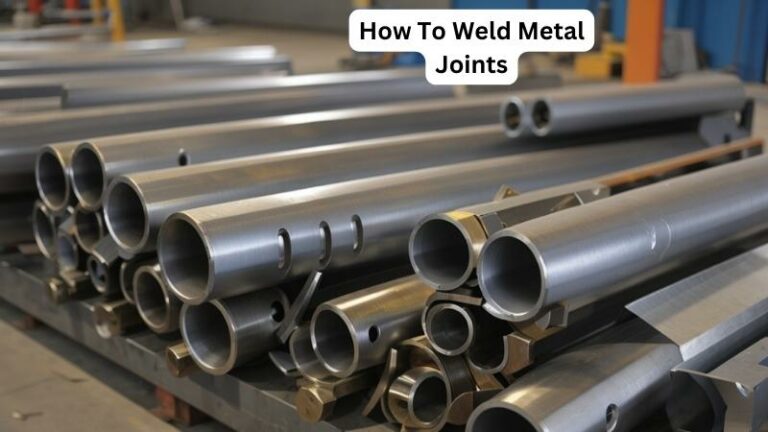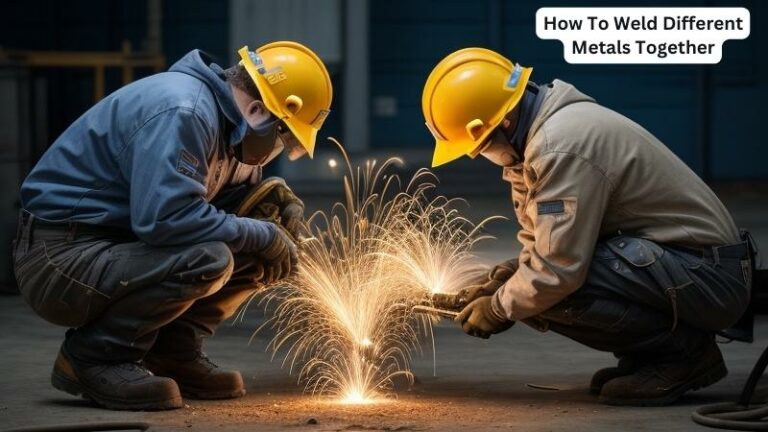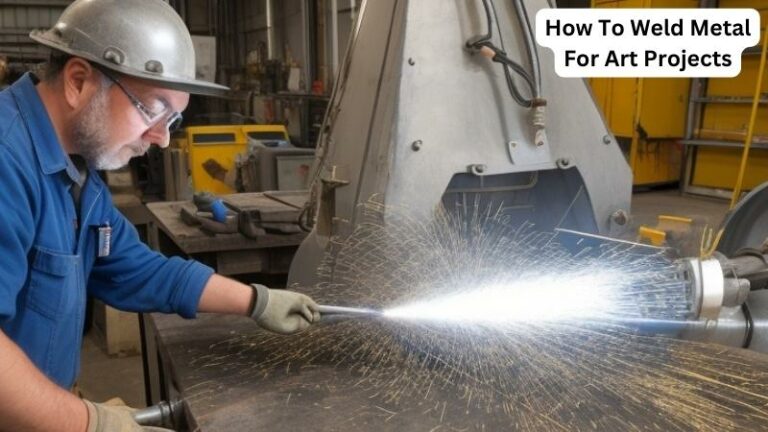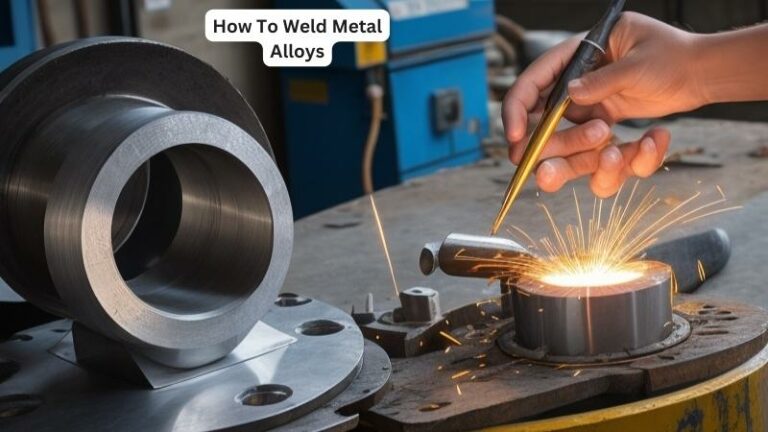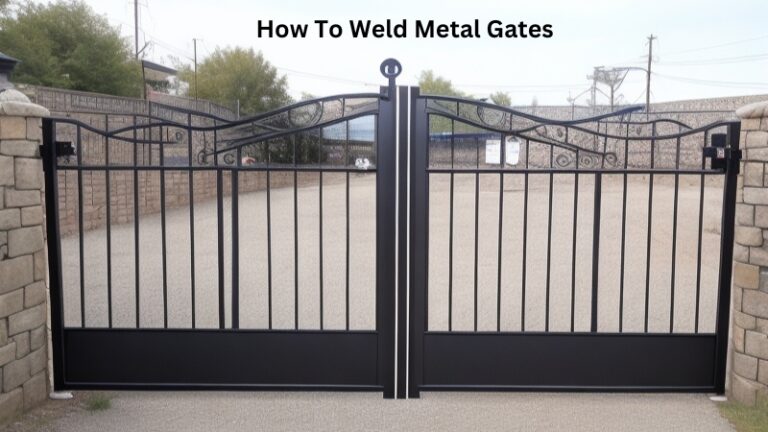How To Weld Metal Without A Welder
In the world of metalworking, welding is a technique that has long been revered for its ability to join two pieces of metal together with precision and strength. However, what if I told you that there is a way to achieve a similar result without the need for a traditional welder?
Yes, you read that right! In this guide, we will explore the fascinating art of welding metal without a welder, diving into the various methods and techniques that can be employed to accomplish this seemingly impossible task.
Whether you’re a seasoned metalworker looking to expand your skillset or a DIY enthusiast eager to take on new challenges, learning how to weld metal without a welder opens up a whole new world of possibilities.
From using common household items as makeshift welding tools to harnessing the power of electricity to create a bond between metals, this unconventional approach to welding will surely leave you in awe.
So, grab your safety goggles and prepare to embark on a journey that will challenge your preconceptions and ignite your creative spirit as we delve into the realm of welding metal without a welder.
How to weld metal without a welder:
- Prepare the metal surfaces by cleaning them thoroughly.
- Use a propane torch or oxy-acetylene torch to heat the metal until it reaches the melting point.
- Apply flux to the heated area to remove impurities and promote better bonding.
- Place the metal pieces together and use a hammer to forge them tightly.
- Allow the metal to cool and then grind down any excess material.

How to Weld Metal Without a Welder
Step 1: Prepare the Metal Surfaces
The first step in welding metal without a welder is to prepare the surfaces that will be joined. Start by cleaning the metal pieces thoroughly to remove any dirt, rust, or debris.
Use a wire brush or sandpaper to achieve a clean and smooth surface. Once the surfaces are clean, apply a metal primer to enhance the bond between the metal pieces.
Next, align the metal pieces in the desired position. Use clamps or magnets to hold them together securely. It is important to ensure that the pieces are properly aligned to achieve a strong and seamless joint.
Step 2: Brazing
Brazing is a technique that uses a filler metal to join metal pieces together. It involves heating the metal pieces and melting the filler metal, which then flows into the gaps between the surfaces to create a strong bond.
To braze metal without a welder, you will need a torch or a heat source, such as a propane torch or an oxy-acetylene torch.
Start by heating the metal pieces evenly, focusing the flame on the joint area. Once the metal reaches the required temperature, introduce the filler metal.
The filler metal should melt and flow into the joint through capillary action. Allow the joint to cool down naturally, and then remove any excess filler metal with a file or grinder.
Step 3: Use Adhesive
If brazing is not an option or if you prefer a non-heat method, you can use adhesive to join metal pieces together. There are specialized metal adhesives available that are designed for high-strength bonding.
Before applying the adhesive, make sure the surfaces are clean and free from any contaminants.
Apply the adhesive to both surfaces and press them firmly together. Use clamps or weights to hold the pieces in place while the adhesive cures.
Follow the manufacturer’s instructions for the specific adhesive you are using, as curing times may vary. Once the adhesive has fully cured, the joint will be strong and durable.
Step 4: Mechanical Fasteners
Another method to join metal without a welder is by using mechanical fasteners. This includes techniques such as riveting, bolting, or screwing. Mechanical fasteners provide a reliable and removable connection between metal pieces.
Before using mechanical fasteners, you may need to drill holes in the metal pieces to accommodate the fasteners.
Align the pieces and insert the fasteners through the holes. Tighten them securely using the appropriate tools. Ensure that the fasteners are tightened evenly to achieve a secure joint.
Step 5: Cold Welding
Cold welding is a method that involves bonding metal pieces together without the need for heat. It utilizes a specialized adhesive that creates a molecular bond between the metal surfaces.
Cold welding is suitable for thin metal pieces and is commonly used in electronics and jewelry making.
To cold weld, clean the surfaces thoroughly and apply the cold welding adhesive. Press the metal pieces together firmly, ensuring good contact between the surfaces.
Allow the adhesive to cure according to the manufacturer’s instructions. Once cured, the bond will be strong and permanent.
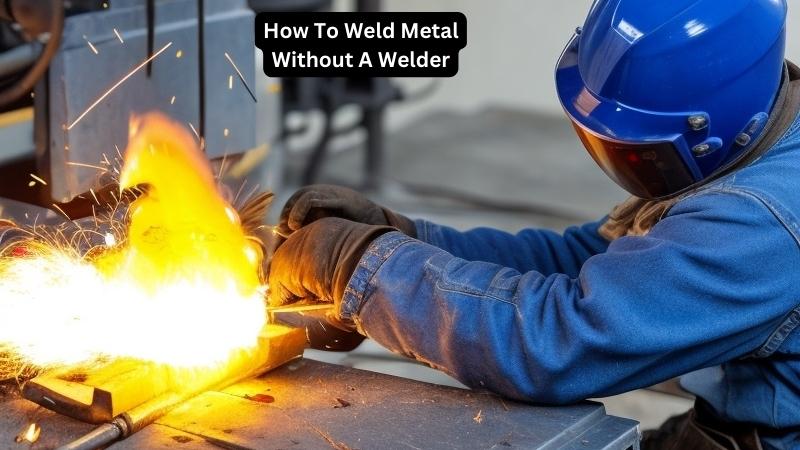
Faqs for How To Weld Metal Without A Welder:
Answer:
If you don’t have access to a welder, there are a few alternatives you can consider. One option is brazing, which involves using a torch to heat the metal and then applying a filler metal that melts at a lower temperature than the base metal.
Another option is soldering, which uses a lower-temperature heat source and a filler metal that melts and flows into the joint.
Additionally, adhesive bonding can be used to join metal parts together, using specialized high-strength adhesives designed for metal bonding.
It’s important to note that these alternatives may not offer the same strength and durability as traditional welding, so they may not be suitable for all applications.
It’s always best to consult with a professional or do thorough research before attempting any alternative methods.
Answer:
To perform brazing, you will need a few key tools and materials. First, you will need a torch, such as an oxy-acetylene torch or a propane torch, to provide the heat necessary for the brazing process.
You will also need a filler metal, which is typically in the form of a rod or wire, that melts at a lower temperature than the base metal.
The specific type of filler metal you use will depend on the metals you are joining and the desired strength of the joint.
In addition to these main components, you may also need flux, which is a chemical compound that helps to remove oxides from the metal surfaces and promote the flow of the filler metal.
Other tools that may be helpful include a wire brush for cleaning metal surfaces, pliers for handling hot materials, and safety equipment such as gloves and goggles.
Answer:
Soldering is most commonly used for joining electrical components and plumbing fixtures, where the materials being joined are typically copper, brass, or other non-ferrous metals.
Soldering can also be used for some ferrous metals, such as steel, but it may require special flux and a higher temperature solder.
However, soldering is generally not recommended for joining aluminum or other metals with high melting points.
It’s important to consider the specific properties of the metal you are working with and consult with a professional or reference material to determine if soldering is a suitable method for joining your particular metals.
Answer:
Adhesive bonding offers several advantages for joining metal. First, it does not require high heat, so it can be used to join metals with different melting points or heat-sensitive materials.
Adhesive bonding also distributes the load evenly across the joint, resulting in a strong and durable connection.
Additionally, adhesive bonding can provide resistance to corrosion and vibration, as well as creating a seal that prevents the ingress of moisture or contaminants.
However, it’s important to note that the strength of the adhesive bond may not be as high as a welded joint, and it may not be suitable for high-stress applications or where high temperatures are involved.
Proper surface preparation and adhesive selection are crucial for achieving a successful bond, so it’s recommended to follow the manufacturer’s instructions and consult with adhesive experts if needed.
Answer:
Yes, safety precautions are important when using alternative methods for welding. When brazing or soldering, it’s essential to work in a well-ventilated area to avoid inhaling harmful fumes.
It’s also crucial to wear appropriate personal protective equipment, such as gloves and goggles, to protect against burns and eye injuries. When using a torch, always follow the manufacturer’s instructions for safe operation and keep a fire extinguisher nearby in case of accidents.
Additionally, it’s important to be aware of the specific hazards associated with the materials being used. Some metals may release toxic fumes when heated, so it’s important to research and understand the potential risks and take necessary precautions.
If you are unsure about the safety procedures or have concerns, it’s always best to consult with a professional or seek guidance from experts in the field.

Source: gizmoplans.com
Stick Aluminum Together Without a Welder.
conclusion:
learning how to weld metal without a welder opens up a world of possibilities for those who want to tackle DIY projects or repair work on a budget. While traditional welding equipment can be expensive and intimidating for beginners, the techniques and methods discussed in this article provide accessible alternatives that anyone can try. By employing techniques such as brazing, soldering, or even using adhesive bonding, individuals can achieve strong and reliable welds without the need for specialized equipment.
However, it is important to note that these alternative methods may have limitations in terms of the type and thickness of metal that can be welded. Additionally, they may not provide the same level of strength and durability as traditional welding techniques. Therefore, it is essential to thoroughly research and understand the specific requirements and limitations of each method before attempting to weld metal without a welder. With the right knowledge and precautions, individuals can confidently embark on their welding projects, knowing they have cost-effective options at their disposal.
